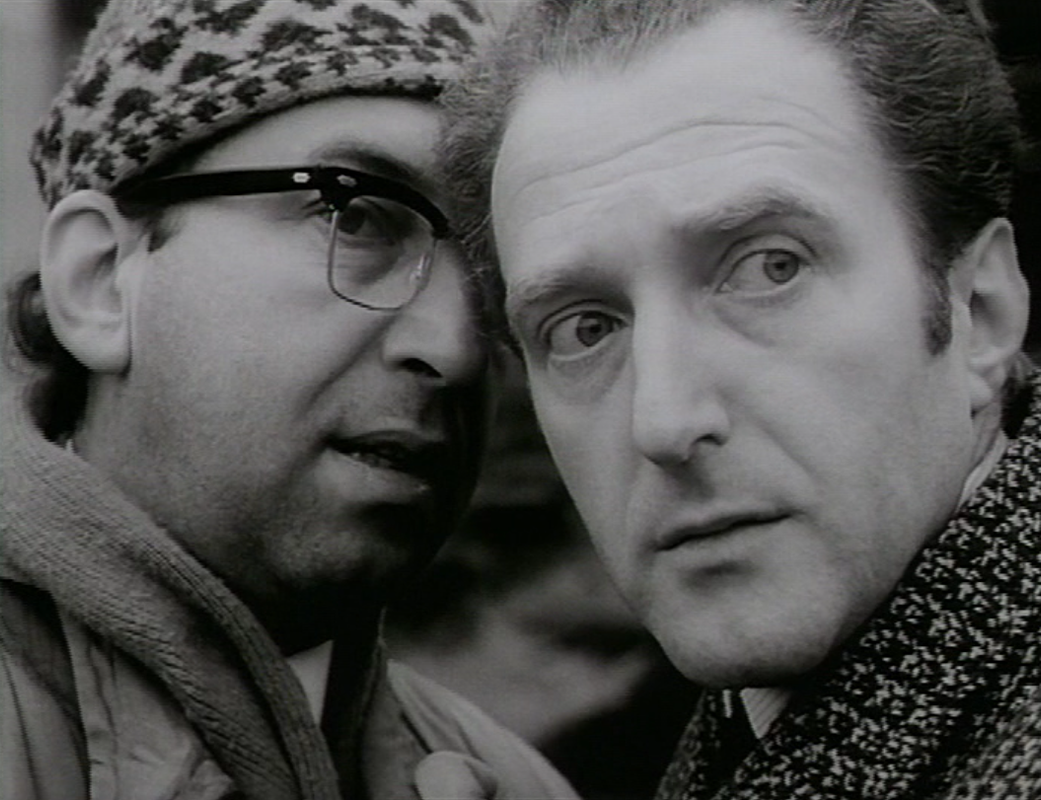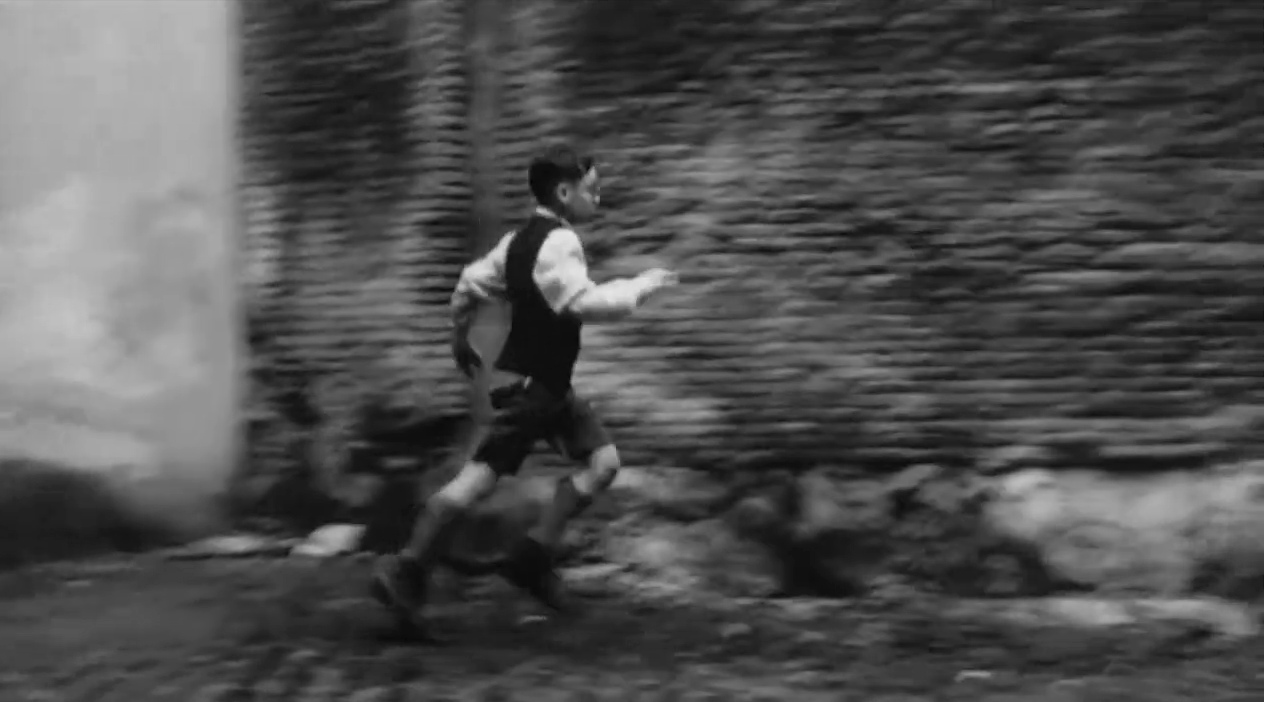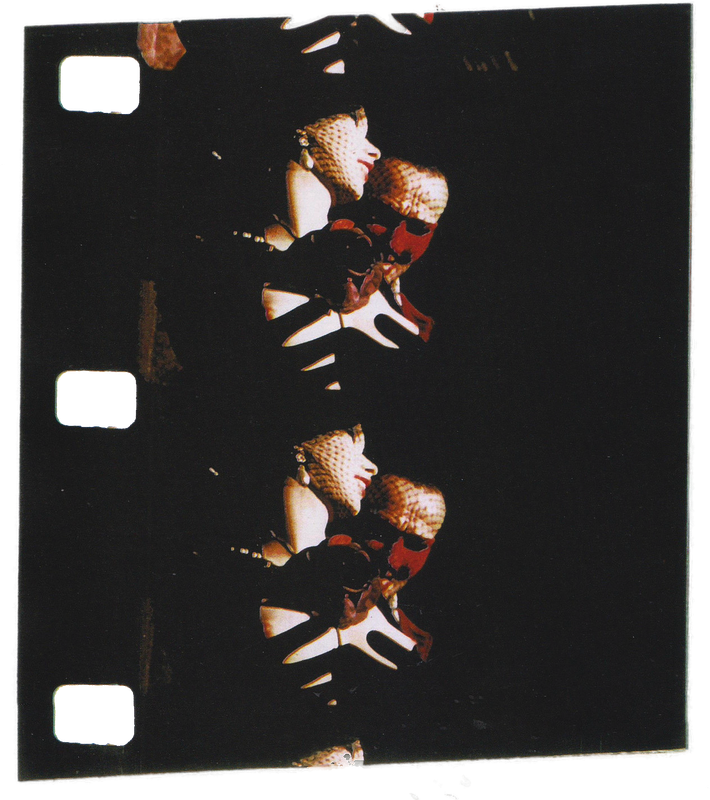“A premonition of a horror film” Outer Space (Peter Tscherkassky, 1999)
Oct
26

Barbara Hershey as Carla Moran. DP of The Entity: Stephen H. Burum.
[Favourite] psychological horror*
– tagline
Real horror is not found in broken dinner plates or corpuscular masses of light. It's in what the mind does with that input, in how those lux morph into human-like shapes. In how gusts of wind becomes larynx-touched voices. Cut up the neatly filed research papers and be left with the whispers of the mind.
* the Bales 2025 Film Challenge for October is horror-themed as opposed to date-based, and is all about favourites. Expect non-horror and films I believe to be relevant instead.
shortfilm
Zahrada [The Garden] (Jan Švankmajer, 1968)
Oct
25

Jiří Hálek and Luděk Kopřiva as Josef and Frank. DP: Svatopluk Malý.
”'M. Valdemar,' I said, 'are you asleep?' He made no answer, but I perceived a tremor about the lips, and was thus induced to repeat the question, again and again. At its third repetition, his whole frame was agitated by a very slight shivering; the eye-lids unclosed themselves so far as to display a white line of the{n} ball; the lips moved sluggishly, and from between them, in a barely audible whisper, issued the words: 'Yes; — asleep now. Do not wake me! — let me die so!'” Il caso Valdemar [The Facts in the Case of M. Valdemar] (Gianni Hoepli + Ubaldo Magnaghi, 1936)
Oct
24

M. Valdemar on his deathbed.
[A] favourite horror movie overall*
– Edgar Allan Poe, The Facts in the Case of M. Valdemar (1845) (via)
A man agrees on being hypnotised while in the state of dying. This particularly haunting and efficiently gory film – the first in the genre – is the result.
* the Bales 2025 Film Challenge for October is horror-themed as opposed to date-based, and is all about favourites. Expect non-horror and films I believe to be relevant instead.
La sixième face du pentagone [The Sixth Face of the Pentagon] (Chris Marker + François Reichenbach, 1968)
Oct
21
1967

Armed police seen from the back. In front of him someone holds up a sign that reads WHY WAR. DPs: Tony Daval, Chris Marker & Christian Odasso.
“Strange things are happening today.” Au secours ! [Help!] (Abel Gance, 1924)
Oct
18
Au secours !

A rather tall ghost struts along a nonplussed Max. DPs: Émile Pierre, André-Wladimir Reybas & Georges Specht.
A [favourite] horror comedy*. This post goes out to Max Linder, who – together with his wife Hélène “Ninette” Peters – took his own life 100 years ago, on October 31, 1925.
Max (Max Linder) bets that he can spend one whole hour in a haunted castle without calling for help. In face of all the (in camera!) terrors, Max faces his fears with ease. Until, just minutes before the clock strikes midnight, the phone rings.
– title card
And there was this other bet. One between Linder and director Abel Gance. Linder bet that Gance would not be able to shoot a movie in only three days. With ghosts, skeletons, and wildlife galore, the result is a delightful Grand Guignol à la Max.
* the Bales 2025 Film Challenge for October is horror-themed as opposed to date-based, and is all about favourites. Expect non-horror and films I believe to be relevant instead.
1943-1997 ['43 – '97] (Ettore Scola, 1997)
Oct
16
1943

The boy (Francesco Cencioni) on the run in a locked down town. DP: Carlo Tafani.
“Here lies
Pierre MOLINIER
born on 13 April 1900 died around 1950
he was a man without morals
he was proud of it and gloried in it
No need to pray for him.”Satan bouche un coin (Jean-Pierre Bouyxou + Raphaël Marongiu, 1968)
Oct
10

In an autoerotic display, Androgyne (Pierre Molinier) fondles a woman (Janine Delannoy) wearing one of his masks that echoes Molinier's deceased sister (via). DPs: Jean-Pierre Bouyxou, Raphaël Marongiu & Loïc Picard.
A [favourite] color [horror] film*
– Pierre Molinier, mock-epitaph (via, NSFW as goes without saying)
* the Bales 2025 Film Challenge for October is horror-themed as opposed to date-based, and is all about favourites. Expect non-horror and films I believe to be relevant instead.
Happy Birthday to John [Happy Birthday John Lennon] (Jonas Mekas, 1995)
Oct
9
1972

A rectangular birthday cake with a chocolate acoustic guitar spells out Happy Birthday John From Yoko And The Whole World. Presumed DP: Jonas Mekas.
On October 9th, 1972 an exhibition of John and Yoko's art – designed by the Master of the Fluxus movement, George Maciunas and curated by David Ross – opened at the Syracuse Museum of Art in New York. On the same day, an unusual group of John and Yoko's friends, including Ringo Starr, Allen Ginsberg, and Paul Krasner, gathered to celebrate John's birthday.
Your Safety First (George Gordon, 1956)
Oct
5
2000

The protagonist, voiced by George O'Hanlon, reading an ad for tomorrow's car in the October 5, 2000 newspaper.
“Again he shook his head. The world's gone mad, he thought. The dead walk about and I think nothing of it. The return of corpses has become trivial in import. How quickly one accepts the incredible if only one sees it enough!” Soy leyenda (Mario Gómez Martín, 1967)
Oct
3
zombies

Robert Neville (Moisés Menéndez) looking out over an empty rooftop. DP: Jesús Ocaña.
(A favourite) zombie movie*
Now, settima. Of all the zombie movies in the world you had to pick a vampire story? Why yes. Yes I did.
– Richard Matheson, I Am Legend (1954)
Just like my actual favourite zombie film, that one from 1968, Soy leyenda is based on Richard Matheson's post-apocalyptic horror novel I Am Legend (1954). The story describes a world where the living have become undead vampire-like creatures. A lone man tries to rationalise that new world through reason and science, and legend.
In the man's mind, the undead become the familiar, the vampire. In our mind, watching this, we believe to see the foreshadowing of the popculture zombie. The abandoned well-known landscapes, the ceaseless repetition of what the old life had instilled, the normalcy of the grotesque. Oh how familiar they have become.
* the Bales 2025 Film Challenge for October is horror-themed as opposed to date-based, and is all about favourites. Expect non-horror and films I believe to be relevant instead.